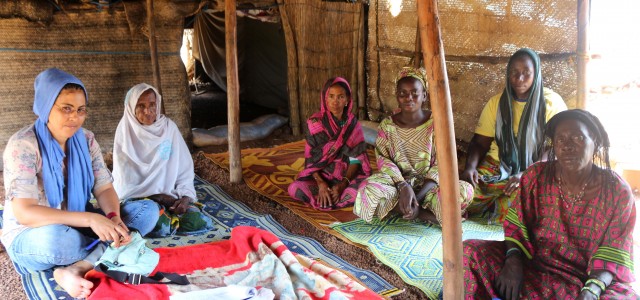
Refugees’ livelihoods are important
18th December 2014
Almost 15 years after the UN General Assembly proclaimed 18 December to be International Migrants Day (IMD), how has the occasion been received and observed, whose rights does it champion, and which groups does it currently exclude?
Migrants and refugees: what’s the difference?
In December 2000, two global days of observance related to migration were declared: the upcoming International Migrants Day, and World Refugee Day, which falls annually on 20th June. While International Migrants Day is a global observance for the world’s entire transnational migratory population, including refugees, it excludes internally displaced people (IDPs) – arguably some of the world’s most vulnerable people. World Refugee Day, on the other hand, is concerned primarily with forced migrants such as refugees and IDPs – not the entire range of migrants.
Migratory issues related to refugees (and IDPs) pose special problems, which may justify World Refugee Day as separate from International Migrants Day. Nonetheless, the separation of international migrant and refugee issues into two distinct thematic areas might be problematic for the ways that related migration issues are thought about, dealt with and cohesively addressed. In Ban Ki-moon’s 2013 message on International Migrants Day, he associates international migration with discussions on labour rights and workers’ benefits, describing international migration as ‘a powerful tool for reducing poverty and enhancing opportunity’. World Refugee Day, on the other hand, more often emphasizes rights to asylum and freedom and protection from harassment, conflict or discrimination. Whether people are forced or choose to leave their places of origin, they are all still moving into new communities and experiencing changes to their livelihoods. However, the 1990 International Convention on the Protection of the Rights of All Migrant Workers and Members of Their Families specifically excludes refugees.
The new level of permanence associated with displacement and refugeeism calls for a more united approach. While refugees are often believed to return to their country of origin within five to ten years, the reality might be much longer today; refugees may spend, on average, 20 years away. This complicates the traditional approach to refugee issues focused on treatment and access to care, and underlines the need for more scrutiny of long-term issues and solutions related to legal rights, the ability to work and the right to secure a living wage – many of which are associated with International Migrants Day. While international law may insist on refugees’ rights to work being upheld, national refugee situations remain complicated. For example, the traditional protection space may not only be contested, but also hard to define as refugees mesh more with host communities over time. For this reason, focus is needed on refugees’ incomes and livelihoods, not just on their access to care or more basic freedom.
Bridging the gap between refugee and migrant
International migration (currently at 3 percent of the global population) can boost aspects of societies and economies. However, resettlement and economic opportunities for refugees, especially in urban areas, can be difficult to promote – and may not be accepted by host countries and communities. Likewise, without sufficient information on just how refugees are faring, support for their progress and resettlement is likely to be far less effective, in turn limiting their contributions to society.
To provide such information on refugee livelihoods and incomes, Evidence for Development is currently undertaking individual household method (IHM) studies with UNHCR and other partners, monitoring the livelihoods of Malian refugee households – both urban and rural – in Burkina Faso. Good knowledge of where households are getting the resources to survive and how their incomes are supplemented by work is important to UNHCR-supported livelihoods projects and other activities, and ultimately to strong transitions from precarious refugee situations to stable growth and interconnection.
While some of the estimated 143,000 Malian refugees live in camps in the Sahel or other rural parts of Burkina Faso and neighbouring countries, others live in urban areas such as Bobo-Dioulasso. EfD is carrying out work in both locations in partnership with the Polytechnic University of Bobo-Dioulasso to understand if and how how transitions are occurring and what the estimated needs are for diverse refugee households. This work will inform programmes aiming to support livelihoods of both refugees and local host communities, providing household-specific information across refugee groups in different living situations.
What International Migrants Day could represent
International Migrants Day offers an important opportunity to draw attention to the rights and needs for livelihoods to which people living under many different circumstances outside of their places of origin should be entitled. Worldwide, the number of forcibly displaced people has surpassed 50 million, including 16.7 million refugees and 33.3 million internally displaced persons (IDPs). International migration statistics as a whole, meanwhile, reached 232 million people in 2013.
By serving as a point of convergence for all types of migrants, IMD could have the potential to help address refugees’ and IDPs’ economic situations, build understanding of where transitions need to be improved, and serve to unite forcibly-displaced people and voluntary migrants of all motivations and circumstances in a global movement for rights and recognition.
Because International Migrants Day strives to support inclusivity and has become a strong motivational platform for migrant workers’ rights, refugees can and should be a major part of not just Global Refugee Day but also IMD. Addressing refugee and migrant problems together should encourage further emphasis on the diversity of migrant situations and the need for complex, interconnected solutions, providing greater opportunities for successful rights protection.
Categories: Burkina Faso, Livelihoods, Refugees and displacement

Comments
No comments yet.
The comments are closed.